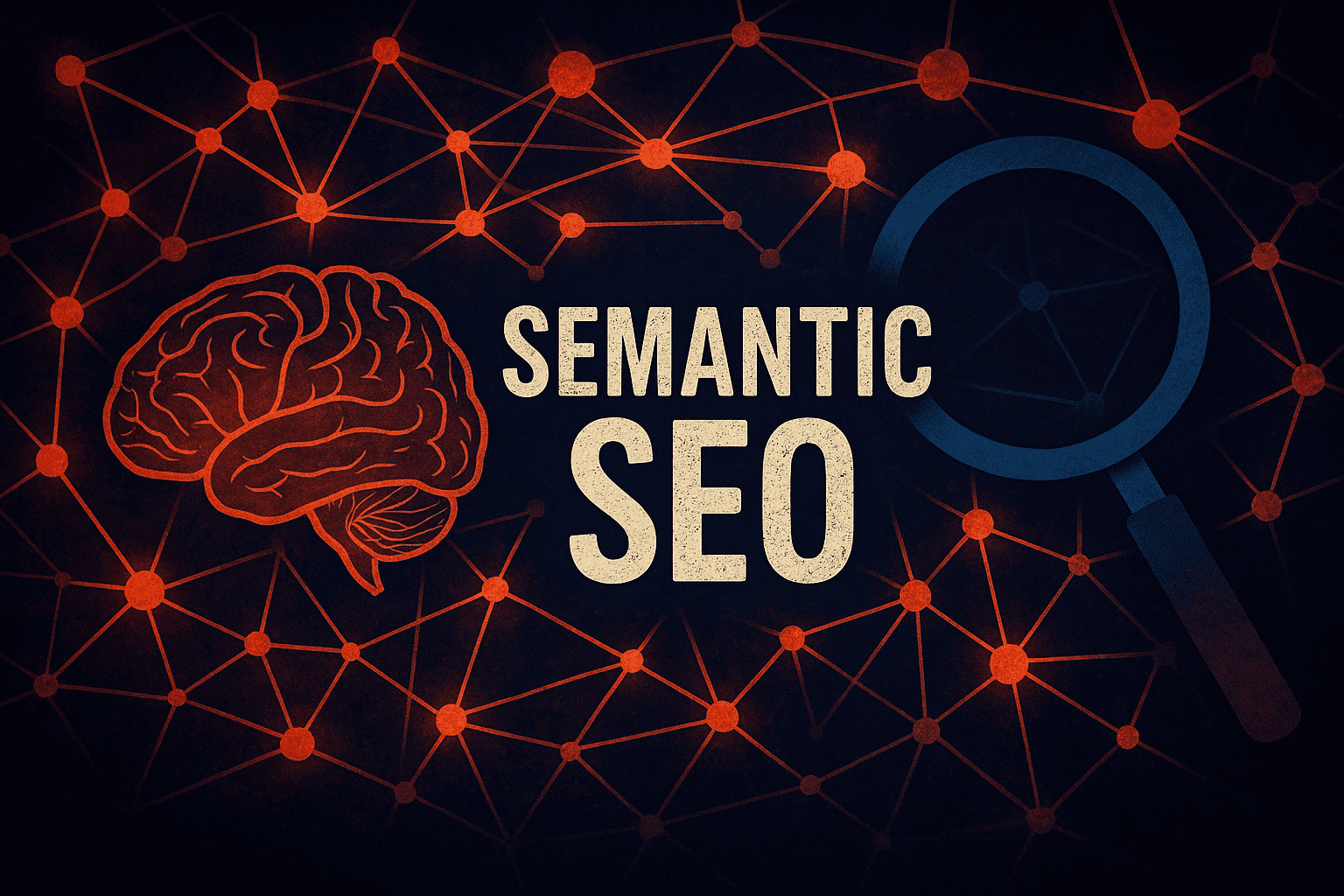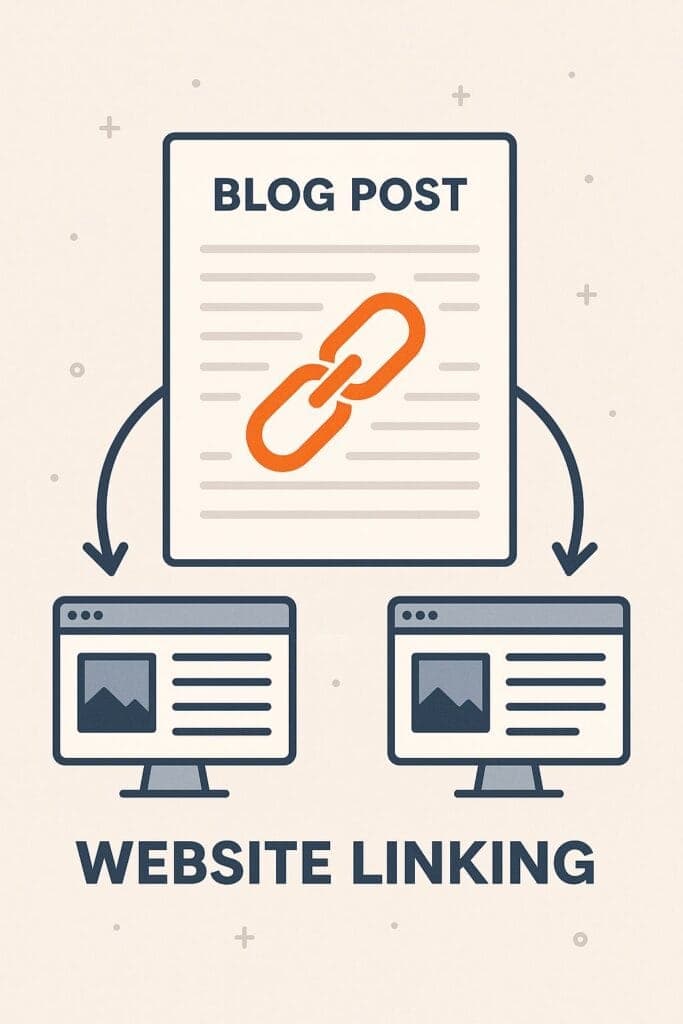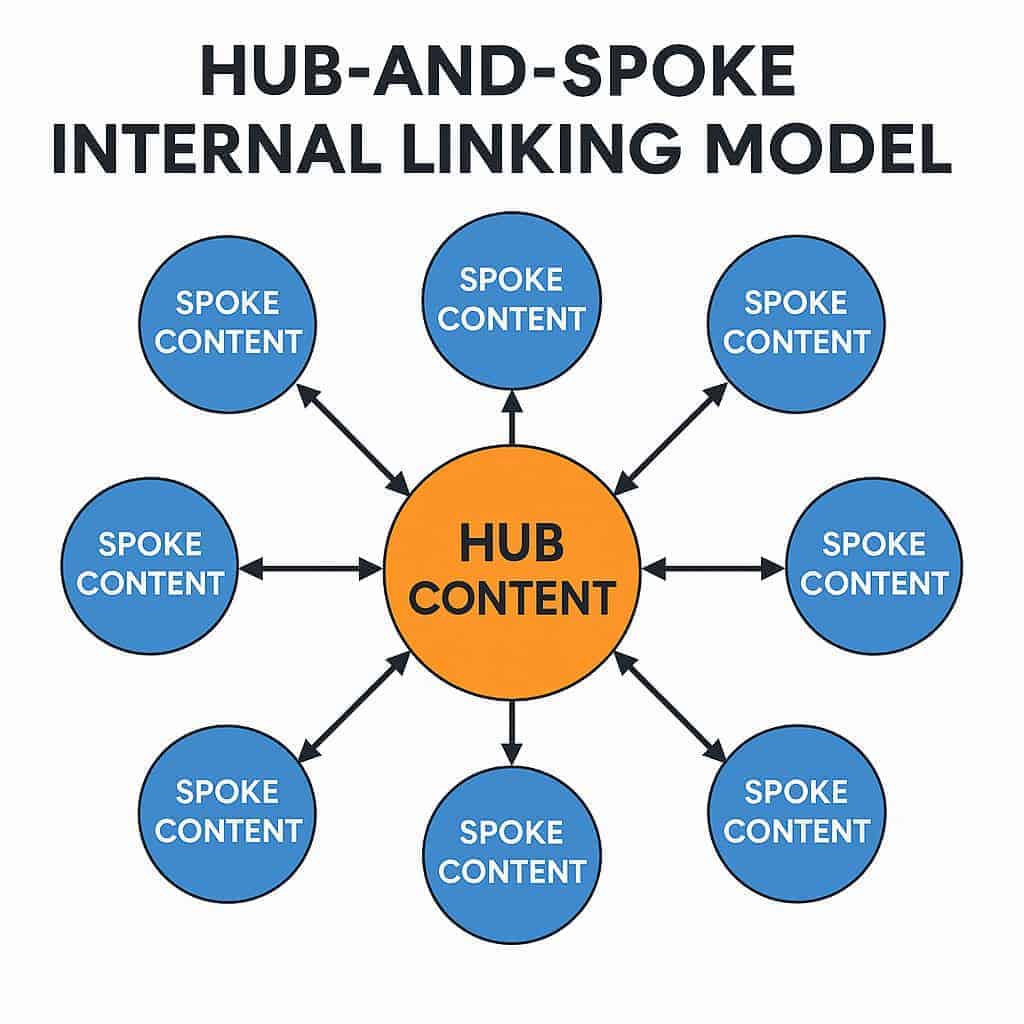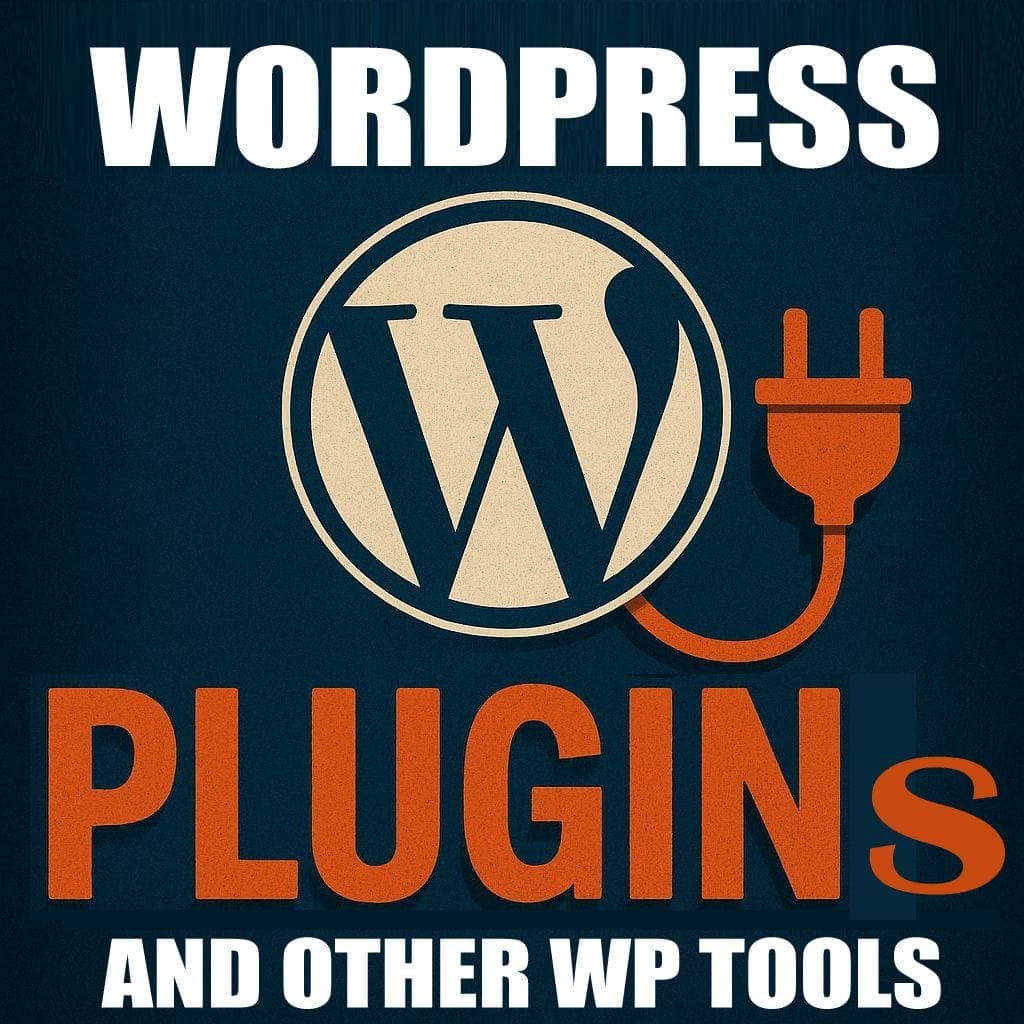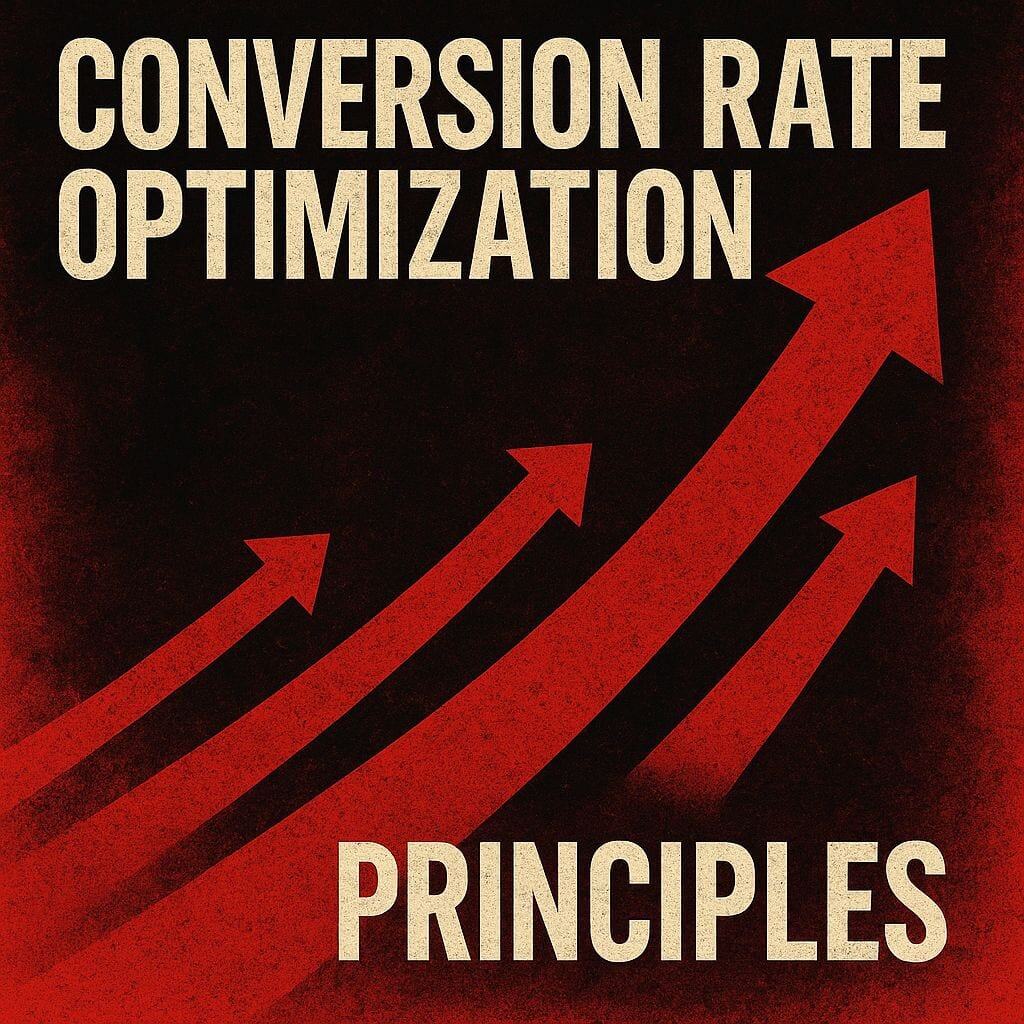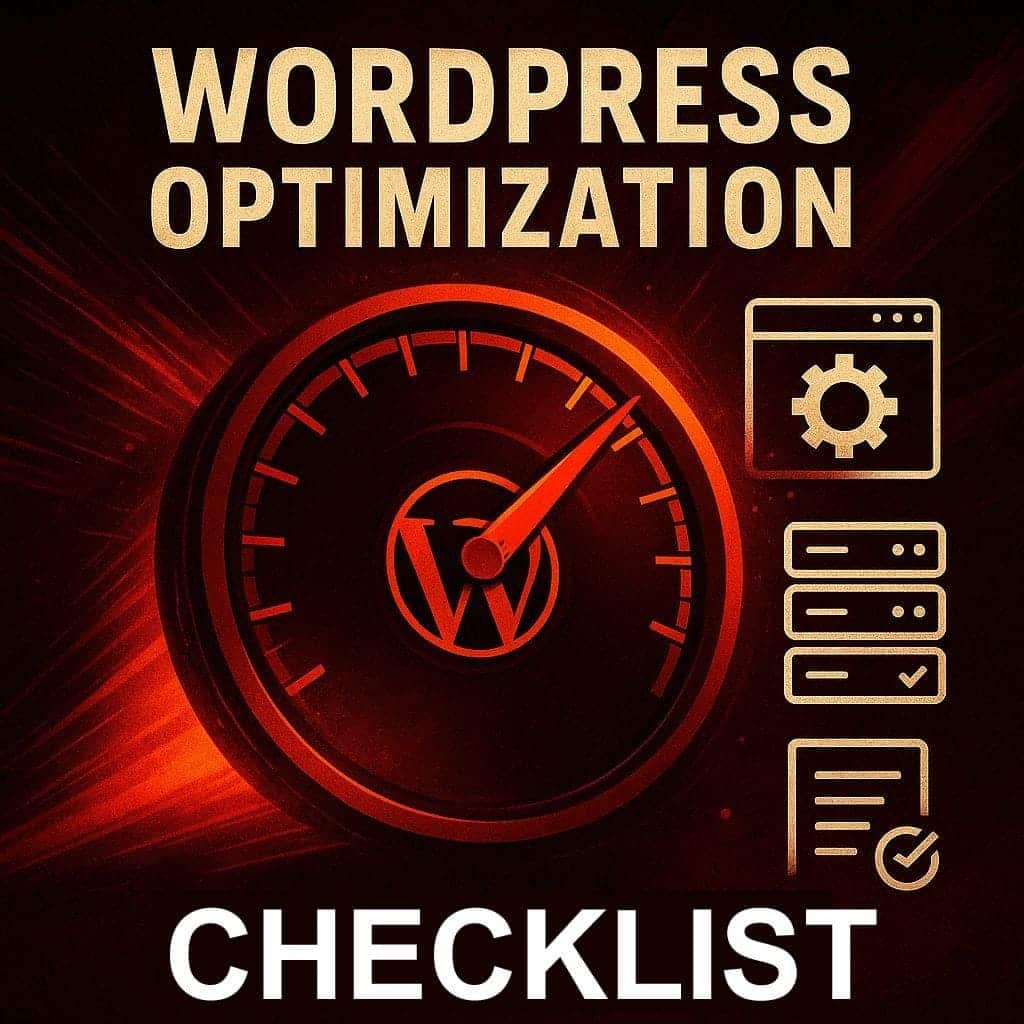A Definitive Guide to WordPress Optimization
TL;DR: In 2025, successful WordPress optimization goes beyond traditional Google rankings to dominate AI-driven search results. This comprehensive guide provides a clear framework, emphasizing high-performance technical foundations (speed, security, optimal hosting), building strong topical authority (pillar-cluster content structure and demonstrating E-E-A-T), meticulous on-page optimization (structured for AI readability), strategic internal and external linking, smart plugin use, and measuring success through Conversion Rate Optimization (CRO) and ROI. The guide serves as an actionable blueprint to sustainably grow traffic, conversions, and revenue in the age of AI-powered search engines.
Table of Contents
- Introduction: Beyond Rankings – The New Era of WordPress Success
- Part 1: The AI-Ready Foundation – Technical SEO & Performance
- Part 2: Building Unshakeable Topical Authority for the AI Era
- Part 3: On-Page SEO & Content Structure for AI and Humans
- Part 4: The 2025 Link-Building Playbook: Authority, Citations & Internal Structure
- Part 5: The Ultimate WordPress Toolkit: Essential Plugins & AI Integration
- Part 6: Measuring What Matters: From Traffic to Conversions (CRO) & ROI
- Your Action Plan: The Ultimate WordPress Optimization Checklist (TODO.md)
- Conclusion: Your Roadmap to Sustainable Growth
What is WordPress Optimization?
WordPress optimization involves systematically enhancing your WordPress website to achieve maximum performance, visibility in AI-driven search results, and user experience. Unlike traditional SEO, which focused mainly on keyword rankings, modern WordPress optimization integrates technical performance, topical authority, AI-compatible content structuring, strategic linking, and Conversion Rate Optimization (CRO) to deliver sustainable, long-term business growth.
Specific Benefits:
-
Increased Visibility in AI Search:
AI-powered search engines like Google, ChatGPT, and Perplexity reward highly structured, authoritative content. WordPress optimization positions your website to be easily understood and promoted by these AI models. -
Better Technical Performance:
Implementing optimized hosting (e.g., WP Engine, Kinsta), caching solutions (WP Rocket), and minimal, efficient plugins drastically improves page loading speed, a critical factor for both search rankings and user retention. -
Stronger Topical Authority:
By creating comprehensive pillar pages and detailed cluster content around strategically selected topics, your website becomes the definitive source within your niche, significantly increasing the chances of citation by AI engines. -
Enhanced User Engagement and Conversions (CRO):
Optimizing on-page elements, multimedia assets, and implementing user-friendly navigation substantially improves conversion rates, turning traffic into measurable business results. -
Measurable Return on Investment (ROI):
Advanced analytics and clear ROI calculations demonstrate precisely how optimization efforts translate directly into revenue, validating ongoing investments in optimization strategies.
Achieve WordPress Optimization Success
The definition of a successful WordPress website has fundamentally evolved. The singular pursuit of a #1 ranking on Google, while still valuable, is an outdated metric of success. Today, true digital dominance is achieved through an integrated system: attracting the right audience with precision-targeted, AI-optimized SEO; converting that audience through a flawless and persuasive user experience (Conversion Rate Optimization, or CRO); and, most critically, proving the tangible financial impact of these efforts (Return on Investment, or ROI).
The rise of Generative AI in search engines like Google, Perplexity, and ChatGPT has rewritten the rules. Search is now a conversation, and answer engines reward depth, authority, and clarity above all else. Simply stuffing keywords into thin content is a guaranteed path to obscurity. Instead, success requires building a digital presence that is recognized as a definitive source of truth—by both human users and AI algorithms.
This guide serves as the ultimate playbook for this new era. It provides a comprehensive, step-by-step framework for transforming a WordPress site from a simple online brochure into a powerful, predictable engine for traffic and revenue generation. Whether you are a beginner taking your first steps or a seasoned expert looking to refine your strategy, this blueprint will equip you with the knowledge to thrive in the age of AI search.
Part 1: The AI-Ready Foundation – Technical SEO & Performance
Before a single word of content is written, the technical foundation of your WordPress site must be flawless. A slow, insecure, or poorly configured website is like building a skyscraper on sand; it is destined to fail, regardless of the architectural brilliance above. This section covers the non-negotiable technical prerequisites that are essential for success in both traditional and AI-driven search environments.
High-Performance Hosting: The Bedrock of Speed and Reliability
Your choice of web hosting is the single most critical performance factor for your website. It directly impacts site speed, uptime, and security—all of which are foundational ranking signals for Google and prerequisites for being considered by AI answer engines. In 2025, a slow server response time is a death sentence for visibility.
According to internal Standard Operating Procedures (SOPs) for AI optimization, a server response time of under 500 milliseconds is considered critical. This is because AI engines need to retrieve and synthesize information rapidly to provide real-time answers.
When selecting a host, prioritize these key metrics:
- Server Response Time (TTFB): Aim for under 500ms, ideally under 200ms. This is a direct measure of your server’s speed.
- Uptime Guarantee: Look for 99.9% or higher. Frequent downtime signals unreliability to search engines.
- Caching Support: The host should offer server-level caching to reduce load times.
- CDN Integration: A Content Delivery Network (CDN) is essential for global audiences, serving assets from servers closer to the user.
- PHP & MySQL Versions: Ensure the host supports the latest, most performant versions of PHP and MySQL/MariaDB.
Recommended Hosting Providers Comparison
For most serious WordPress users, Managed WordPress Hosting offers the best balance of performance, security, and support. Here is a comparison of top-tier providers based on features crucial for SEO and AI readiness.
| Provider | Key Features | Best For | Starting Price (Approx.) |
|---|---|---|---|
| WP Engine | Managed WordPress hosting, Google Cloud infrastructure, built-in CDN, advanced security, automated updates, expert support. | Businesses and high-traffic sites requiring top-tier performance and reliability. | ~$30/month |
| Kinsta | Powered by Google Cloud Platform, premium CDN, automatic scaling, strong security, developer-friendly tools. | Agencies and performance-focused users who need scalability and robust support. | ~$35/month |
| SiteGround | Performance-optimized shared and cloud hosting, free CDN, custom caching solutions, user-friendly interface. | Beginners and small to medium-sized businesses looking for a balance of performance and affordability. | ~$15/month |
Core WordPress & Theme Setup: Configuring for Excellence
With a solid hosting foundation, the next step is to configure WordPress and select a theme that enhances, rather than hinders, performance. A theme is not just a design; it is the structural code of your site’s front end.
Theme Optimization Criteria
An SEO-friendly theme in 2025 must be:
- Lightweight and Fast: Minimal code bloat and optimized assets.
- Mobile-First: Designed for a seamless experience on mobile devices, as Google uses mobile-first indexing.
- Clean HTML Structure: Uses proper heading hierarchy (H1, H2, etc.) and semantic HTML5 tags.
- Schema-Ready: Compatible with schema markup plugins to provide context to search engines.
Recommended themes like GeneratePress, Astra, and Kadence are built with these principles in mind, providing a fast and flexible foundation for any WordPress site.
The Essential Plugin Stack: Power Without the Bloat
Plugins extend WordPress functionality, but an excessive or poorly coded plugin stack is a primary cause of slow performance and security vulnerabilities. The goal is to use a minimal set of high-quality plugins that cover essential needs.
- Caching Plugin: This is non-negotiable. A caching plugin like WP Rocket (premium) or LiteSpeed Cache (free, if on a LiteSpeed server) creates static HTML versions of your pages, drastically reducing server load and speeding up delivery to users. . Key settings to enable include minification of CSS/JS files and lazy loading for images.
- SEO Plugin: A comprehensive SEO plugin like All in One SEO (AIOSEO), Rank Math, or Yoast SEO is required to manage on-page elements, sitemaps, and schema. (This is covered in-depth in Part 5).
- Security Plugin: A tool like Wordfence or Sucuri is vital to protect against malware, brute-force attacks, and other threats that can lead to downtime and Google blacklisting.
- Image Optimization Plugin: Tools like Smush or ShortPixel automatically compress images on upload and convert them to next-gen formats like WebP, significantly reducing page weight.
Crawlability & Indexability: Opening the Doors to Search Engines
Even the best website is useless if search engines and AI crawlers cannot find, access, and understand its content. These fundamental settings ensure your site is visible.
- Check Visibility Settings: In your WordPress dashboard, navigate to `Settings > Reading`. Ensure the box for “Discourage search engines from indexing this site” is unchecked. This is a common mistake that can render a site invisible to Google.
- Set SEO-Friendly Permalinks: Go to `Settings > Permalinks` and select the “Post name” structure. This creates clean, descriptive URLs (e.g., `yoursite.com/your-post-title/`) that are easy for both users and search engines to read, rather than cryptic URLs like `yoursite.com/?p=123`.
- Establish a Canonical URL (WWW vs. non-WWW): Decide whether your site will use `www.yoursite.com` or `yoursite.com`. Set this in `Settings > General` and stick with it. This prevents Google from seeing two different versions of your site, which can cause duplicate content issues.
- Optimize Your `robots.txt` File: This file gives instructions to web crawlers. A modern `robots.txt` should explicitly allow AI crawlers like `GPTBot` and `PerplexityBot` while disallowing access to admin and plugin directories. You can edit this file using your SEO plugin.
- Generate and Submit an XML Sitemap: An XML sitemap is a roadmap of your website for search engines. SEO plugins automatically generate one (e.g., `yoursite.com/sitemap.xml`). You must submit this sitemap to Google Search Console and Bing Webmaster Tools to ensure they can efficiently discover all your important pages.
Sitemap Submission Workflow
Part 2: Building Unshakeable Topical Authority for the AI Era
In 2025, the path to SEO dominance is paved with authority. Search engines and AI models are no longer just matching keywords; they are evaluating a website’s depth of expertise on a given subject. Building “topical authority” means becoming the go-to, comprehensive resource for a specific niche. This section outlines the strategic framework for planning and creating content that establishes your site as an undeniable expert, a critical signal for Google’s E-E-A-T (Experience, Expertise, Authoritativeness, Trustworthiness) guidelines and a magnet for AI citations.
Strategic Topic Selection: The Topical Map Blueprint
The foundation of topical authority is a well-researched content plan, known as a “topical map.” This approach shifts the focus from chasing individual, disconnected keywords to systematically covering an entire subject area. This signals to algorithms that your site possesses comprehensive knowledge.
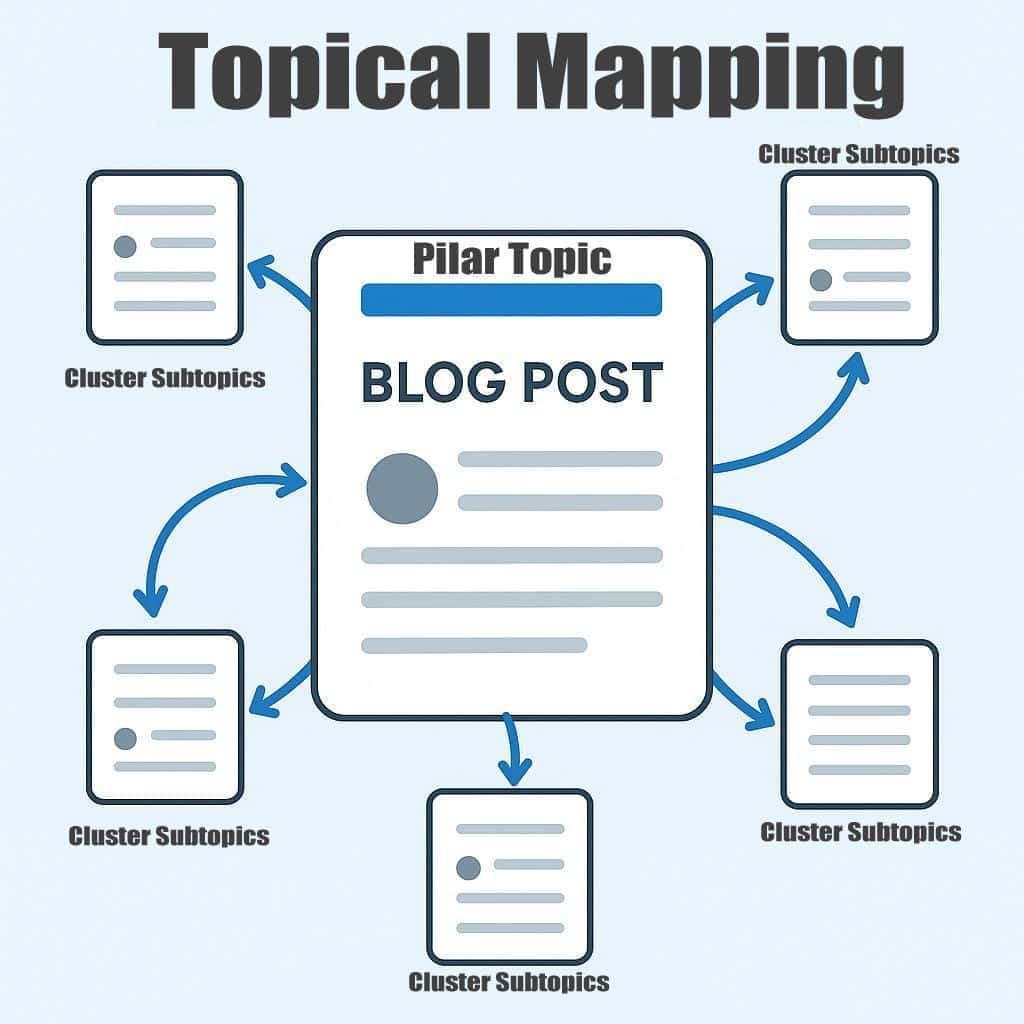
- Identify Core Pillar Topics: Brainstorm 3-5 broad, foundational topics that are central to your business. For a digital marketing agency, these might be “SEO,” “Content Marketing,” and “Paid Advertising.” These pillars should be topics you can create extensive content around.
- Research Cluster Subtopics: For each pillar, use tools like Google Keyword Planner, AnswerThePublic, or the free tiers of Ahrefs/Semrush to identify specific, long-tail questions and subtopics. These will form your “cluster” content. For the “SEO” pillar, clusters could include “technical SEO checklist,” “how to do keyword research,” and “local SEO strategies.”
- Create the Topical Map: Visually organize this hierarchy. The pillar page sits at the center, with numerous cluster pages branching out, each addressing a specific user query. This map becomes your content creation roadmap.
Example of a Topical Map
Pillar Page Execution: The Central Hub of Authority
A pillar page is a long-form, comprehensive guide that provides a broad overview of your core topic. It acts as the central hub for your topic cluster. Its purpose is to be the definitive resource that you want to rank for the main, high-volume keyword.
- Length and Scope: Pillar pages are substantial, typically ranging from 2,000 to 5,000 words. They should cover all major aspects of the topic at a high level.
- Structure is Key: A successful pillar page is highly structured and scannable. It must include:
- A compelling introduction that defines the topic.
- A linked table of contents for easy navigation.
- Clearly defined sections for each subtopic, using H2 and H3 tags.
- Internal links from each section to the more detailed cluster pages.
- A concluding summary with a clear call-to-action (CTA).
- Optimization: Use the broad pillar keyword in your H1 title, URL, and meta description. Optimize for readability using your SEO plugin’s analysis tools.
Cluster Content Execution: Answering Every Question
Cluster pages are the “spokes” that connect to your pillar “hub.” Each cluster is a detailed, in-depth article (typically 1,500-2,500 words) that focuses on a single, specific long-tail keyword or question identified in your topical map. These pages are your opportunity to rank for highly specific queries and are prime candidates for being cited in AI-generated answers.
Optimizing Cluster Content for AI
To make your cluster content “AI-friendly,” structure it for easy extraction:
- Use Question-Based Headings: Frame your H2s and H3s as direct questions (e.g., “How Do You Fix Broken Links in WordPress?”).
- Provide Direct Answers First: Begin each section with a concise, one- or two-sentence answer to the heading’s question. This is often what AI will pull for a snippet.
- Leverage Structured Formats: Use bullet points, numbered lists, and HTML tables to present data and steps. AI algorithms can easily parse and repurpose this structured information.
- Link Back to the Pillar: Every cluster page must contain at least one contextual link back to its corresponding pillar page, reinforcing the site’s structure and authority.
Demonstrating E-E-A-T: The Currency of Trust
Google’s E-E-A-T framework is non-negotiable in 2025. AI models are also being trained to prioritize sources that demonstrate strong signals of experience, expertise, authoritativeness, and trustworthiness. Weaving these signals into your content is essential.
Show, Don’t Just Tell:Instead of claiming expertise, demonstrate it. Include original data, case studies, personal experiences, or unique insights.
- Author Bios: Every article should feature a detailed author bio box with credentials, experience, and links to social profiles or other publications.
- Cite Authoritative Sources: Link out to reputable studies, official documentation, or expert opinions to support your claims.
- Keep Content Fresh: Regularly update your content to reflect the latest information. Displaying a “Last Updated” date is a strong trust signal.
Example of an Effective Author Bio Box
A clear author bio with credentials and social links builds trust and signals expertise.
Part 3: On-Page SEO & Content Structure for AI and Humans
With a solid technical foundation and a strategic content plan, the next layer of optimization happens on the page itself. This section details the micro-level tactics for optimizing each piece of content, blending classic on-page SEO principles with the specific structural demands of Generative Engine Optimization (GEO). The goal is to create pages that are perfectly understood by search algorithms and deeply engaging for human readers.
Keyword Strategy & Search Intent: The ‘Why’ Behind the Search
The era of “keyword density” as a primary goal is over. While including your target keyword is still important, modern SEO focuses on **semantic relevance** and satisfying **user intent**. In 2025, a natural keyword density of 1-2% is often cited as a healthy benchmark, but this should be a byproduct of high-quality, comprehensive writing, not a forced metric.
The real focus is on understanding the three primary types of search intent and creating content that aligns with them:
- Informational: The user wants to learn something (e.g., “what is topical authority”). These queries are best served by blog posts, guides, and pillar pages.
- Commercial: The user is researching before a purchase (e.g., “best SEO plugins for WordPress”). These are ideal for comparison articles, reviews, and detailed product pages.
- Transactional: The user is ready to buy or take action (e.g., “buy WP Rocket plugin”). These queries should lead directly to product or checkout pages.
Aligning your content type with the user’s intent is crucial for reducing bounce rates and satisfying both users and search engines.
Optimizing Core On-Page Elements: Your Digital First Impression
These core HTML elements are your first opportunity to communicate a page’s relevance to search engines and entice users to click from the search results page (SERP).
- Title Tags: Arguably the most important on-page factor. Keep it between 50-60 characters, place your primary keyword near the beginning, and make it compelling enough to earn the click.
- Meta Descriptions: While not a direct ranking factor, the meta description (around 155 characters) is your ad copy in the SERPs. A well-written description that includes the keyword (which Google often bolds) can significantly improve your click-through rate (CTR).
- URL Slugs: Keep URLs short, descriptive, and clean. Use hyphens to separate words and include the primary keyword. For example: `yoursite.com/blog/on-page-seo-checklist`.
- Header Tags (H1-H6): Structure is paramount. Use one unique `tag for the main page title. Use and tags to create a logical, scannable hierarchy for your content. Framing headers as questions is a powerful strategy for capturing featured snippets and AI answers.
The Anatomy of a Perfectly Optimized Page
This infographic highlights the critical on-page elements that must be optimized for every piece of content.
Structuring Content for AI Extraction: The Art of the “Chunk”
AI answer engines like Google’s AI Overviews and Perplexity don’t consume entire articles; they retrieve and synthesize relevant “chunks” of information. To optimize for this, your content must be structured for machine readability.
“AI search engines don’t index or retrieve whole pages — they break content into passages or “chunks” and retrieve the most relevant segments for synthesis. That’s why you should optimize each section like a standalone snippet.”
Follow these best practices:
- Lead with the Answer: Start key sections with a direct, bolded, one-sentence answer. This makes the information easily extractable.
- Use Structured Data Formats: Employ HTML lists (`
- `, `
-
- `) and tables (“) whenever possible. These formats are highly favored by AI for creating summaries and comparisons.
- Write with Clarity and Simplicity: Use short paragraphs (2-4 sentences) and simple language. Avoid jargon and complex sentence structures that can confuse parsing algorithms.
- Implement Schema Markup: Use schema (covered in Part 5) to explicitly tell AI what your content is about (e.g., an FAQ, a How-To guide, a Product). This is one of the most powerful signals for GEO.
Multimedia Optimization: Making Images and Videos Work for You
Images and videos are crucial for user engagement, but they must be optimized to avoid slowing down your site and to provide SEO value.
- Image File Optimization:
- Filename: Use descriptive, keyword-rich filenames (e.g., `wordpress-technical-seo-checklist.webp`) instead of generic ones (`IMG_1234.jpg`).
- File Size & Format: Compress images to reduce file size without sacrificing too much quality. Use modern formats like WebP, which offers superior compression over JPEG and PNG.
- Alt Text: Provide descriptive alt text for every image. This is crucial for accessibility and helps search engines understand the image’s content.
- Video Optimization:
- Hosting: Never host videos directly on your WordPress server. Embed them from platforms like YouTube or Vimeo to save bandwidth and improve page speed.
- YouTube SEO: Optimize the video’s title, description, and tags on YouTube itself, as YouTube is the world’s second-largest search engine.
Part 4: The 2025 Link-Building Playbook: Authority, Citations & Internal Structure
In the interconnected web of 2025, links are the synapses that form a website’s authority. A strategic linking plan does more than just pass “link juice”; it creates a logical architecture for users and crawlers, reinforces topical expertise, and builds the off-page trust signals that are critical for ranking in both traditional search and AI-powered answer engines. This section covers the two pillars of a modern linking strategy: mastering your internal structure and earning high-value external backlinks and citations.
 Mastering Internal Linking: The Architecture of Authority
Mastering Internal Linking: The Architecture of Authority
Internal linking is one of the most powerful—and most overlooked—SEO strategies. It is the practice of linking from one page on your site to another. When done correctly, it achieves three critical goals: it helps search engines discover and index your content, it distributes authority (PageRank) throughout your site, and it guides users to relevant information, increasing engagement and time on site.
The Hub-and-Spoke Strategy
The most effective internal linking strategy for building topical authority is the “hub-and-spoke” or “pillar and cluster” model. This directly supports the content structure outlined in Part 2.
- Link from Pillar to Clusters: Your main pillar page should link out to every one of its supporting cluster pages. This establishes the pillar as the central hub of information.
- Link from Clusters to Pillar: Every cluster page must link back to the main pillar page. This reinforces the pillar’s authority on the topic.
- Link Between Related Clusters: Where relevant, link between different cluster pages to create a web of interconnected, related content. This helps users and search engines discover related subtopics.
Internal Linking Best Practices:
- Use Descriptive Anchor Text: The clickable text of a link (anchor text) should be descriptive and relevant. Instead of “click here,” use anchor text like “learn more about our technical SEO audit.” This gives context to both users and search engines.
- Link Contextually: Place links where they make sense within the content, naturally guiding the reader to more information.
- Don’t Overdo It: Aim for a reasonable number of internal links per page (e.g., 3-10, depending on content length). The goal is to be helpful, not to create a sea of links.
- Audit for Orphans: Regularly use a tool like Yoast SEO Premium or Ahrefs’ Site Audit to find “orphaned pages”—pages with no internal links pointing to them—and ensure they are integrated into your site structure.
Hub-and-Spoke Internal Linking Model
Arrows should point from the pillar to each cluster, and from each cluster back to the pillar, creating a strong, interconnected topic cluster.
Modern External Link Building: Earning Backlinks & Citations
External links (backlinks) from other websites are a powerful vote of confidence and a top-ranking factor. However, the strategy for acquiring them has evolved. In the AI era, the goal is not just to acquire a “dofollow” link but to earn **brand mentions** and **co-citations** from authoritative sources. AI models look at which brands are mentioned together to determine authority.
High-Impact Link Building Strategies for 2025:
- Digital PR & Data-Driven Content: This is the most powerful strategy. Create unique, valuable content assets like original research, statistical roundups, or free tools. Promote these assets to journalists, bloggers, and industry publications. People naturally link to and cite valuable data.
- Strategic Guest Posting: The focus is on **relevance and audience**, not just a site’s Domain Authority. Write for high-quality, topically aligned blogs to place your brand in a relevant context and reach a new audience. The goal is brand placement, not just a link.
- Help a Reporter Out (HARO) & Similar Services: Platforms like HARO, Featured.com, and Help a B2B Writer connect you with journalists looking for expert sources. Providing a valuable quote can earn you a high-authority backlink and mention from a news outlet.
- Broken Link Building: A classic tactic that still works. Use tools like Ahrefs to find broken links on other websites in your niche. Reach out to the site owner, inform them of the broken link, and suggest your relevant content as a replacement.
- The Modern Role of Web 2.0: The user-uploaded SOPs mention a Web 2.0 strategy. In 2025, this is a **supporting tactic**, not a primary one. Creating profiles and content on platforms like Medium, Blogger, or Quora can help build a diversified link profile and establish brand presence across the web. **Crucially, these must be treated as high-quality content hubs, not low-effort link farms.** The content must be unique and valuable to provide any benefit. Spammy Web 2.0 links are ignored or penalized by Google.
Digital PR Outreach Workflow
Part 5: The Ultimate WordPress Toolkit: Essential Plugins & AI Integration
Executing a world-class optimization strategy requires the right set of tools. This section provides a curated guide to the essential WordPress plugins that form the backbone of any successful SEO and performance effort. We’ll compare the leading SEO plugins and demonstrate how to integrate Artificial Intelligence as a powerful co-pilot to accelerate your workflow, from brainstorming to execution.
Choosing Your Core SEO Plugin: A Three-Way Showdown
A dedicated SEO plugin is mandatory for any WordPress site. It provides the controls needed to optimize titles, meta descriptions, schema markup, sitemaps, and more. The three dominant players in 2025 are All in One SEO (AIOSEO), Rank Math, and Yoast SEO. While all are capable, they have different strengths.
| Feature | All in One SEO (AIOSEO) | Rank Math | Yoast SEO |
|---|---|---|---|
| Ease of Use | Very beginner-friendly with a guided setup wizard. Clean interface. | Feature-rich, which can be slightly overwhelming for absolute beginners, but powerful. | Established and trusted. The “traffic light” system is intuitive for content analysis. |
| Free Version Features | Good core features, including basic schema and sitemaps. | Most generous free version, including multiple focus keywords, basic schema types, and a 404 monitor. | Solid basics, but more limited. Single focus keyword, basic schema. |
| Schema Markup | Excellent, with a comprehensive “Next-Gen Schema Generator” in Pro versions for custom types. | Very strong, with many schema types available even in the free version. Advanced schema editor in Pro. | Good for basic schema (Article, FAQ), but requires premium add-ons for more advanced types like Local or Video SEO. |
| AI Integration | AI-powered title/description generator (integrates with ChatGPT). Link Assistant for internal link suggestions. | “Content AI” provides keyword and content suggestions directly in the editor. | AI-powered title/description generation available in the Premium version. |
| Pricing (Premium) | Starts at ~$49.65/year. Pro plan for multiple sites is a good value. | Starts at ~$59/year. Pro plan supports unlimited personal sites. | Starts at $99/year for a single site. Additional features often require separate, costly add-ons. |
| Recommendation | Best for overall value and powerful features, especially for business sites needing advanced schema and e-commerce SEO. | Best for users who want the most features for free. A great choice for bloggers and advanced users on a budget. | Best for beginners who want a simple, trusted solution and are willing to pay for premium features as they grow. |
The Essential Supporting Plugin Stack
Beyond a core SEO plugin, a few other tools are critical for a fully optimized site:
- Performance (Caching): WP Rocket is the gold standard for premium caching plugins, offering an easy-to-use interface with powerful features. For a free alternative, LiteSpeed Cache is excellent if your host uses a LiteSpeed server.
- Analytics: MonsterInsights provides the easiest way to integrate Google Analytics 4 (GA4) with your WordPress dashboard, offering actionable reports without leaving your site.
- Image Optimization: Smush or ShortPixel are essential for automatically compressing images and converting them to WebP format, which is critical for page speed.
- Redirects & Link Health: The Redirection plugin is a must-have for managing 301 redirects to fix broken links and preserve SEO equity. Broken Link Checker can help you find and fix broken links across your site.
AI as Your SEO Co-Pilot: A Practical Prompt Library
Artificial Intelligence, particularly tools like ChatGPT, has become an indispensable assistant for SEO. The key is to use it for **brainstorming, drafting, and optimizing**—not as a replacement for human strategy and final editing. The quality of your output depends entirely on the quality of your input (your prompt).
Here is a library of effective prompts, based on the provided SOPs, to accelerate your workflow:
| Category | Successful Prompt Example |
|---|---|
| Topical Map & Keyword Research | "Act as an expert SEO strategist. Create a topical map for a blog about 'sustainable home gardening'. The pillar topic is 'The Complete Guide to Sustainable Gardening'. Provide 5 cluster topics with 3 long-tail, question-based keywords for each cluster. Classify the intent of each keyword (Informational, Commercial)." |
| Content Outlining | "Generate a comprehensive blog post outline for the keyword 'how to improve WordPress site speed'. The outline should include an H1 title, a short executive summary, at least 5 H2 sections covering key optimization areas (hosting, caching, images, etc.), and an FAQ section with 3 relevant questions and schema-ready answers." |
| Title & Meta Description Generation | "Write 5 compelling, click-worthy SEO titles (under 60 characters) and meta descriptions (under 155 characters) for a blog post about 'the benefits of using a CDN for WordPress'. The target audience is small business owners." |
| Schema Markup Generation | "Generate the JSON-LD schema markup for an FAQPage. The page answers the following three questions: 1. What is a CDN? 2. How does a CDN improve website speed? 3. Is a CDN necessary for a small business website?" |
| Content Repurposing | "Take the following blog post content and repurpose it into a concise script for a 2-minute YouTube video. The script should have a strong hook, 3 main talking points, and a clear call-to-action to read the full article. [Paste blog post text here]" |
| Outreach Emails | "Write a friendly, personalized, and value-driven outreach email. I want to request a backlink from [Target Website Name] to my article on [Your Article Topic]. My article provides updated 2025 data that would be a valuable resource for their readers. Mention their article on [Their Related Article Topic] as context." |
Part 6: Measuring What Matters: From Traffic to Conversions (CRO) & ROI
Generating traffic is only half the battle. In 2025, a successful WordPress strategy must demonstrate its contribution to the bottom line. This means moving beyond vanity metrics like page views and focusing on business outcomes. This section bridges the gap between SEO and revenue by introducing Conversion Rate Optimization (CRO) and a clear methodology for calculating Return on Investment (ROI).
 Understanding Conversion Rate Optimization (CRO)
Understanding Conversion Rate Optimization (CRO)
CRO is the systematic process of increasing the percentage of website visitors who take a desired action. This “conversion” could be anything from making a purchase to filling out a contact form, signing up for a newsletter, or downloading a whitepaper. While SEO brings people to your door, CRO convinces them to come inside and stay.
The basic formula is:
Conversion Rate = (Number of Conversions / Total Visitors) * 100%
A strong synergy between SEO and CRO is essential. SEO drives qualified traffic with the right intent, and CRO ensures the landing page experience fulfills that intent, leading to a higher likelihood of conversion.
The SEO to CRO Funnel
SEO fills the top of the funnel with traffic, while CRO optimizes the middle and bottom stages to drive conversions.
Key CRO Strategies for WordPress
Improving your conversion rate involves data-driven testing and a focus on user experience. Here are some of the most effective CRO tactics for 2025:
- A/B Testing: This is the cornerstone of CRO. Use tools like Google Optimize (though being sunset), Optimizely, or VWO to test variations of headlines, call-to-action (CTA) buttons, colors, images, and page layouts to see which version performs better.
- Improve User Experience (UX): A seamless UX is critical. This includes simplifying navigation, ensuring fast page load times, and making forms easy to complete by reducing the number of required fields.
- Build Trust and Social Proof: Display trust signals prominently. This includes customer testimonials, reviews, case studies, security badges (like SSL), and clear contact information.
- Optimize Landing Pages: For any paid ad or specific campaign, create dedicated landing pages that are free of distractions (like main navigation) and have a single, clear CTA.
- For E-commerce: Streamline the checkout process (e.g., enable guest checkout, offer multiple payment options), use high-quality product images and videos, and write persuasive product descriptions.
E-commerce Conversion Rate Benchmarks (2025)
Conversion rates vary significantly by industry. Understanding these benchmarks helps set realistic goals. According to data compiled from sources like Dynamic Yield, the average e-commerce conversion rates are as follows:
Data sourced from industry reports like Smart Insights and Enhencer. Rates are illustrative benchmarks for 2024/2025.
Calculating and Forecasting SEO ROI: Proving Your Value
Calculating the ROI of your SEO efforts is essential for justifying budgets and proving success to stakeholders. While it can seem complex due to the long-term nature of SEO, a straightforward formula can be applied.
The core formula for ROI is:
ROI = [(Gain from Investment - Cost of Investment) / Cost of Investment] * 100%
To apply this to SEO, you need to define your “Gain” and “Cost”:
- Calculate the Cost of Investment: This includes all expenses related to your SEO campaign, such as agency fees, freelance content writer costs, SEO tool subscriptions, and any ad spend used to promote content.
- Track Conversions from Organic Traffic: Use Google Analytics 4 to track how many conversions (e.g., form submissions, purchases) originate from organic search traffic.
- Assign a Monetary Value to Each Conversion: This is the most critical step.
- For E-commerce: This is simply the average order value.
- For Lead Generation: You need to calculate the value of a lead. A common method is: `Lead Value = Customer Lifetime Value (CLTV) * Lead-to-Customer Conversion Rate`. For example, if your average customer is worth $5,000 (CLTV) and 10% of leads become customers, then each lead is worth $500.
- Calculate the Gain from Investment: Multiply the number of organic conversions by the value per conversion. `Gain = (Number of Organic Conversions) * (Value per Conversion)`.
- Calculate the Final ROI: Plug your numbers into the main formula.
SEO ROI Calculation Example
Let’s walk through a hypothetical scenario for a B2B service company:
- Monthly SEO Cost: $3,000 (agency fee + content)
- Organic Conversions (Form Fills) in a Month: 20
- Customer Lifetime Value (CLTV): $10,000
- Lead-to-Customer Rate: 10% (1 in 10 leads becomes a customer)
Step 1: Calculate Lead Value
$10,000 (CLTV) * 10% = $1,000 per lead
Step 2: Calculate Gain from Investment
20 leads * $1,000/lead = $20,000
Step 3: Calculate ROI
[($20,000 - $3,000) / $3,000] * 100% = ($17,000 / $3,000) * 100% = 567%
Conclusion: For every $1 invested in SEO, the company generated $5.67 in profit.
It’s important to remember that SEO ROI is a long-term metric. It often takes 6-12 months to see a positive return, with peak results typically achieved in the second or third year of a sustained campaign.
Reporting and Data Visualization: Telling the Story of Success
Raw data is not a story. To effectively communicate the value of your optimization efforts, you must visualize your data in a way that is clear, concise, and connected to business goals. Tools like Google Looker Studio allow you to create custom dashboards that pull data from Google Analytics and Search Console.
A good SEO/CRO report should visualize:
- The correlation between organic traffic growth and conversion growth.
- Performance of specific content clusters and their contribution to leads or sales.
- Improvements in keyword rankings for high-intent terms.
- The direct ROI calculation over time.
Case Study: The Impact of Performance Optimization
A WooCommerce performance case study demonstrated the powerful link between technical optimization and revenue. After optimizing the site and implementing intelligent caching, the business saw dramatic improvements.
Data sourced from the WP-Bullet WooCommerce Case Study. The results highlight how technical performance directly translates to significant business growth.
Your Action Plan: The Ultimate WordPress Optimization Checklist (TODO.md)
This guide has covered a comprehensive framework for WordPress optimization. To make it actionable, here is a summary checklist formatted in Markdown. Copy this into a `TODO.md` file or your project management tool to track your progress.
# The Ultimate WordPress Optimization Checklist for 2025
## Phase 1: Foundation Setup & Technical SEO
- [ ] Audit current site speed with Google PageSpeed Insights. Target a mobile score > 80.
- [ ] Confirm hosting meets performance requirements (TTFB < 500ms).
- [ ] Install and configure a core SEO plugin (AIOSEO, Rank Math, or Yoast).
- [ ] Install and configure a caching plugin (e.g., WP Rocket).
- [ ] Install and configure a security plugin (e.g., Wordfence).
- [ ] Verify `robots.txt` is AI-crawler friendly (allows GPTBot, etc.).
- [ ] Submit XML sitemap to Google Search Console and Bing Webmaster Tools.
- [ ] Ensure WordPress visibility settings allow indexing.
- [ ] Set permalinks to "Post name" structure.
## Phase 2: Topical Authority & Content
- [ ] Brainstorm and finalize a topical map with at least 1 pillar and 5 cluster topics.
- [ ] Write and publish the main pillar page (2,000+ words), linking out to planned clusters.
- [ ] Write and publish the first 2 cluster pages (1,500+ words each), linking back to the pillar.
- [ ] Add detailed author bios with credentials to all new content to boost E-E-A-T.
- [ ] Ensure all new content is structured for AI (question-based headers, short paragraphs, lists).
## Phase 3: On-Page SEO & Linking
- [ ] Optimize the title, meta description, URL, and header hierarchy for a key page.
- [ ] Add at least 3-5 relevant internal links to every new blog post.
- [ ] Optimize all images with descriptive filenames and alt text.
- [ ] Implement a backlink strategy (e.g., send 3 HARO pitches or one guest post proposal this week).
## Phase 4: CRO & ROI Measurement
- [ ] Set up at least one primary conversion goal in Google Analytics 4 (e.g., form submission or purchase).
- [ ] Identify one high-impact element to A/B test (e.g., the CTA button on the homepage).
- [ ] Calculate the estimated value of one conversion for your business.
- [ ] Create a basic Looker Studio dashboard to track organic traffic and conversions.
## Phase 5: Ongoing Maintenance
- [ ] **Weekly:** Check Google Search Console for critical errors.
- [ ] **Weekly:** Monitor keyword rankings for top 10 terms.
- [ ] **Monthly:** Review and update one piece of old content for freshness and accuracy.
- [ ] **Monthly:** Run a broken link check and fix any errors.
- [ ] **Quarterly:** Conduct a full content audit and review your topical map.
Essential FAQs for WordPress SEO in 2025
This section addresses the most common and critical questions about modern WordPress SEO, with answers drawn from the principles and strategies detailed in this guide.
What is the most important SEO factor for WordPress in 2025?
While there’s no single factor, a combination of high-quality, E-E-A-T focused content organized by topical authority and a fast, technically sound website are the most critical pillars for success. This integrated approach ensures you satisfy both human users and the algorithms of traditional and AI search engines.
Do I still need an SEO plugin like Yoast or Rank Math if WordPress is already SEO-friendly?
Yes, absolutely. While WordPress provides a good foundation, an SEO plugin is essential for fine-grained control over on-page elements (titles, meta descriptions), generating and managing XML sitemaps, implementing crucial schema markup, and getting real-time optimization feedback. These are all vital for competing effectively in today’s search landscape.
How many internal links should I have on a page?
There is no magic number. Instead of focusing on a quota, focus on relevance and user experience. A good practice is to add 3-5 or more relevant internal links per 1,500 words of content. The primary goal is to guide the reader to other helpful, related content on your site and to reinforce your topic clusters.
Is keyword density still important for SEO?
The concept of achieving a specific “;keyword density” percentage is outdated and can lead to unnatural-sounding content. In 2025, the focus is on semantic relevance and comprehensive topical coverage. Use your primary keyword and a variety of related terms (LSI keywords) naturally within your headings, introduction, and body text. This signals to search engines that you are covering the topic in-depth, which is far more important than keyword repetition.
How do I optimize my WordPress site for AI search like ChatGPT and Google AI Overviews?
Optimizing for AI search involves four key actions: 1) Build topical authority with comprehensive pillar and cluster content. 2) Use clear, structured formats like Q&As, numbered lists, and tables that are easy for machines to parse. 3) Implement specific schema markup (like `FAQPage` and `HowTo`) to provide explicit context. 4) Provide direct, concise answers to common questions at the beginning of your content, as AI models look for easily extractable snippets.
How long does it take to see results from SEO?
SEO is a marathon, not a sprint. While you might see minor ranking improvements in a few weeks, it typically takes 4 to 12 months of consistent, high-quality effort to see significant, sustained results in organic traffic and conversions. The most substantial return on investment is often realized in the second and third years of a campaign, as authority and content assets compound over time.
Conclusion: Your Roadmap to Sustainable Growth
The digital landscape of 2025 demands more than just basic SEO. True, sustainable growth for a WordPress site is born from a holistic, integrated strategy. It begins with a rock-solid technical foundation that ensures speed and accessibility for all crawlers, human or artificial. It is built upon a deep well of authoritative, expertly crafted content that establishes you as a leader in your niche. It is refined through meticulous on-page optimization that speaks the language of both users and AI. And finally, its success is validated by a relentless focus on converting visitors and proving a tangible return on investment.
This blueprint is not a collection of short-term tricks; it is a long-term roadmap. The principles of building topical authority, demonstrating E-E-A-T, and optimizing for user experience are not trends—they are the enduring pillars of digital success. Consistency is the engine that drives this process. By systematically following this guide, starting with the foundation and building upwards, you will create a powerful, resilient online presence that not only survives but thrives in the dynamic age of AI and beyond.

With over 27 years of hands-on SEO expertise, starting from my early days as a CFO. Quitting that job to build a top-ranked web hosting business in 1995, I’ve mastered WordPress optimization as a precise engineering discipline. Through extensive research, high-level consulting, and developing a WordPress site that achieved over a thousand organic Google rankings—culminating in a six-figure sale—I’ve decoded Google’s algorithm over 27 years to develop wordpress engineering that transforms underperforming WordPress sites into authoritative powerhouses. Business owners frustrated by stagnant traffic, low visibility, and missed opportunities find relief as I help them deliver measurable ROI through higher rankings, increased leads, and sustainable growth. As owner of dominant city-based SEO platforms in major U.S. markets, I outperform industry gurus, empowering entrepreneurs, local businesses, agencies, and marketers via my WordPress Optimization services at wordpressoptimization.com to unlock their site’s full potential.

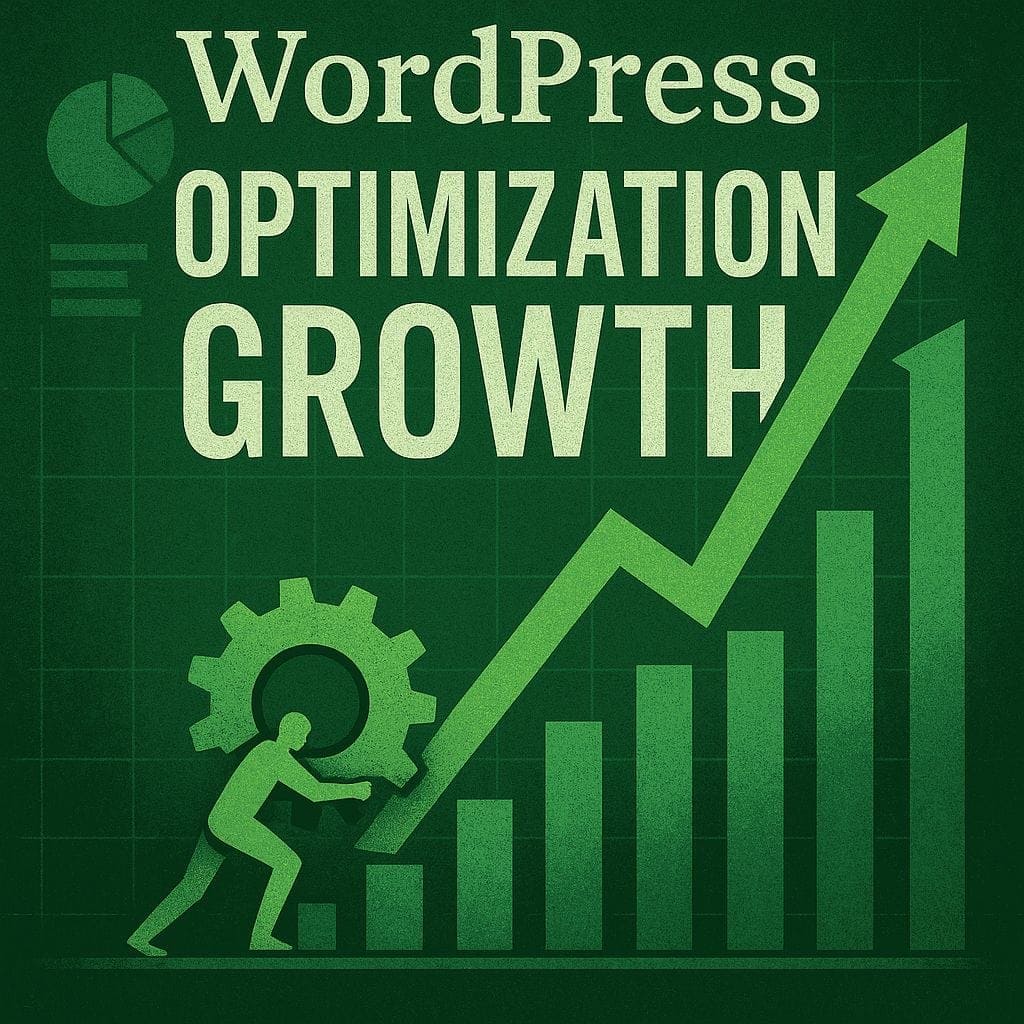

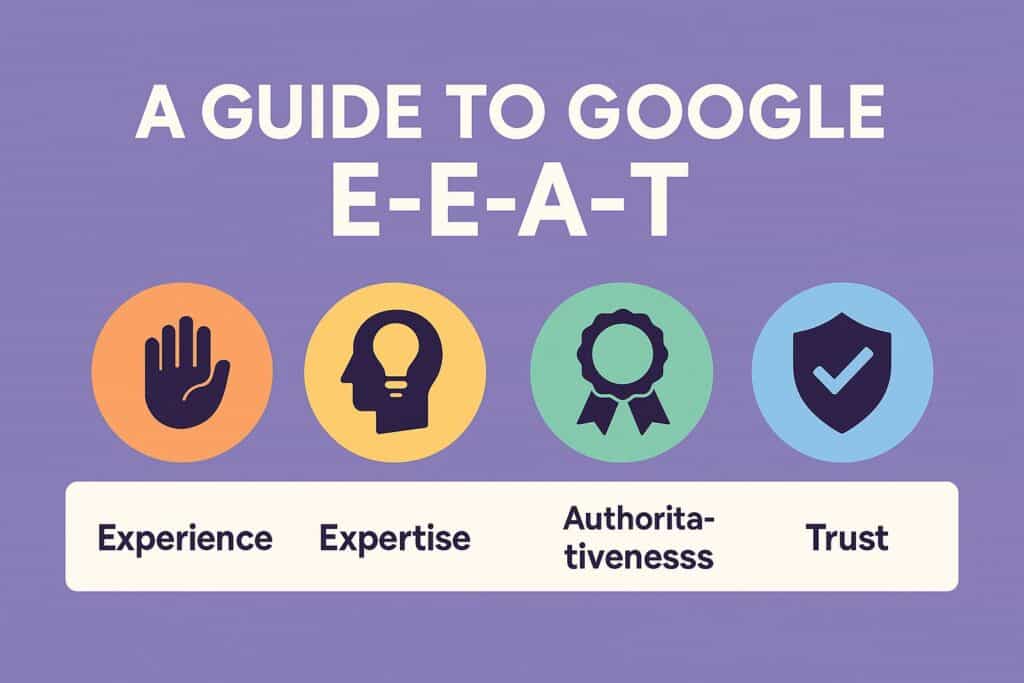 Show, Don’t Just Tell:Instead of claiming expertise, demonstrate it. Include original data, case studies, personal experiences, or unique insights.
Show, Don’t Just Tell:Instead of claiming expertise, demonstrate it. Include original data, case studies, personal experiences, or unique insights.